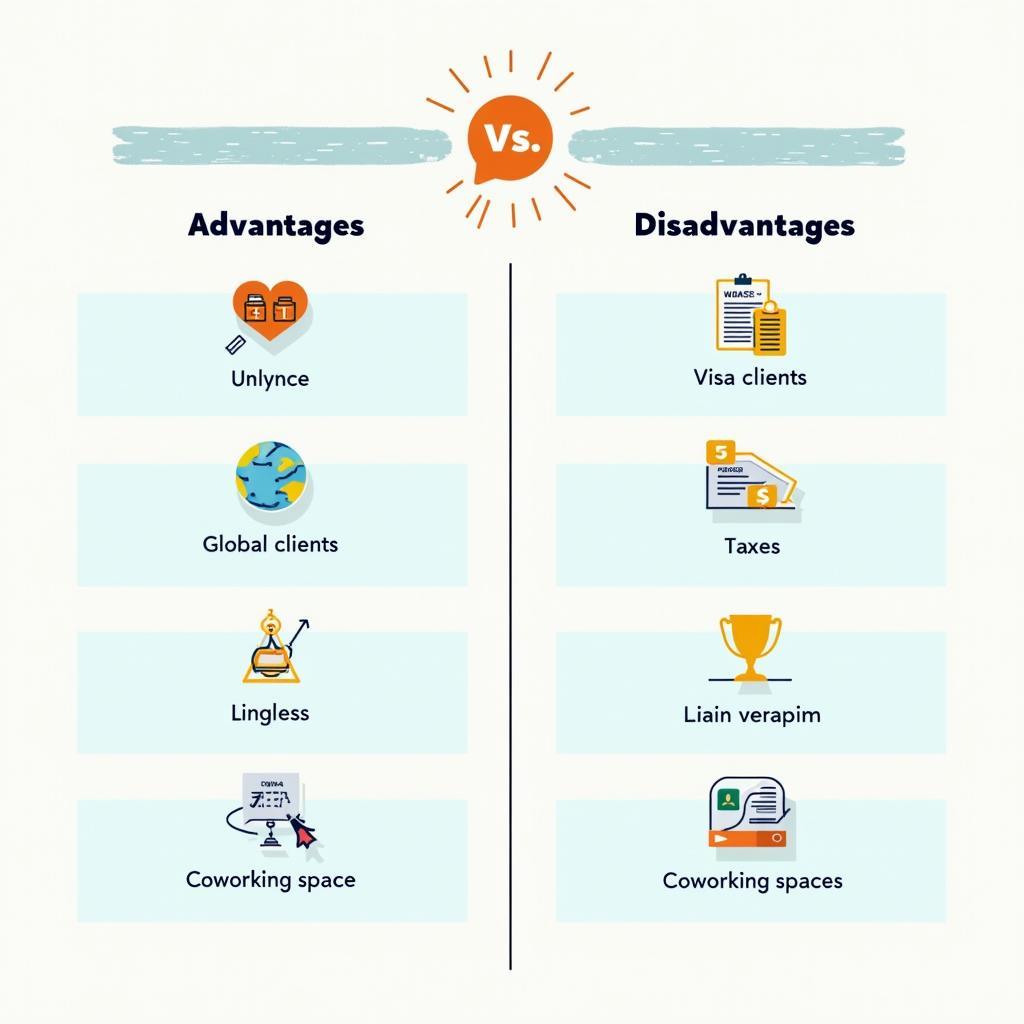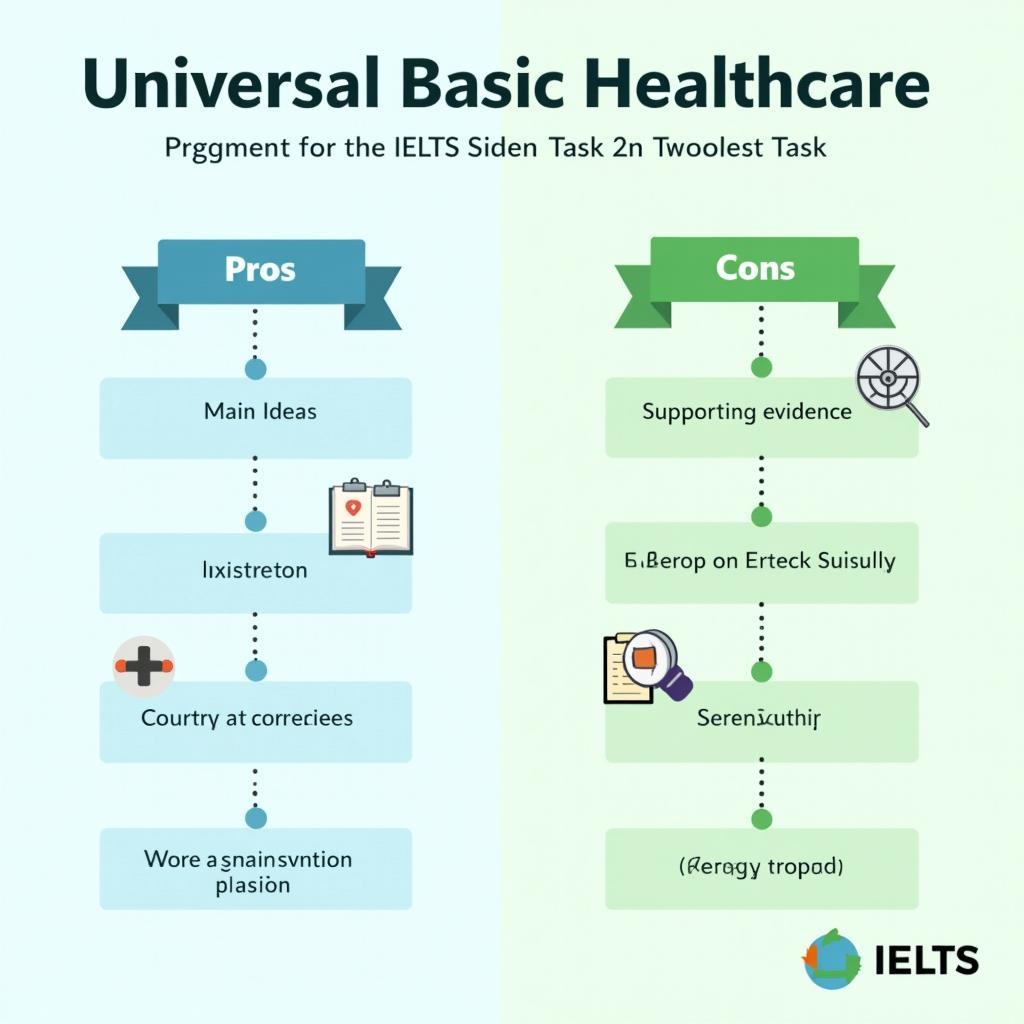Mở bài
“The Rise Of Digital Nomad Lifestyles” – sự trỗi dậy của lối sống du mục kỹ thuật số – là một biến thể nổi bật của xu hướng làm việc từ xa sau đại dịch. Chủ đề này chạm tới nhiều trục nội dung quen thuộc trong IELTS Writing Task 2: công nghệ, việc làm, xã hội, chất lượng cuộc sống, và toàn cầu hóa. Trong phòng thi, các câu hỏi xoay quanh “work from home”, “remote work”, “flexible working” xuất hiện thường xuyên và dễ mở rộng lập luận sang lối sống digital nomad.
Nội dung bài viết
- Mở bài
- 1. Đề Bài và Phân Tích
- 2. Bài mẫu Band 8-9: The rise of digital nomad lifestyles
- Phân tích Band điểm
- Các yếu tố giúp bài này được chấm điểm cao
- 3. Bài mẫu Band 6.5-7
- Phân tích Band điểm
- So sánh với bài Band 8-9
- 4. Bài mẫu Band 5-6
- Phân tích Band điểm
- Những lỗi sai của bài – phân tích & giải thích
- Cách Cải Thiện Từ Band 6 Lên Band 7
- 5. Từ vựng quan trọng cần nhớ về The rise of digital nomad lifestyles
- 6. Cấu trúc câu dễ ăn điểm cao
- 7. Checklist Tự Đánh Giá
- Kết bài
Trong bài viết này, bạn sẽ:
- Nắm 3 đề bài gốc liên quan đến chủ đề, đã được đối chiếu từ IELTS Liz, British Council và IELTS-Blog.
- Học 3 bài mẫu hoàn chỉnh ở 3 mức Band (8-9, 6.5-7, 5-6), kèm phân tích chấm điểm theo 4 tiêu chí chính thức.
- Ôn 12-15 từ/cụm từ then chốt về chủ đề The rise of digital nomad lifestyles, cấu trúc câu ăn điểm, và checklist tự đánh giá.
Một số đề thi/đề luyện tập được xác nhận nguồn:
- IELTS Liz (Task 2 topic – Home working/Remote work): “More and more people prefer to work from home rather than go to the workplace. Do the advantages outweigh the disadvantages?”
- British Council (practice materials – Work and technology): “Advances in technology allow employees to work remotely. Discuss the advantages and disadvantages.”
- IELTS-Blog (reported questions – Work from home): “Some companies allow employees to work from home. Do the advantages of this outweigh the disadvantages?”
[internal_link: từ vựng chủ đề công nghệ]
 Hình minh họa lối sống du mục kỹ thuật số và IELTS Writing Task 2
Hình minh họa lối sống du mục kỹ thuật số và IELTS Writing Task 2
1. Đề Bài và Phân Tích
Advances in technology have made it possible for many people to work remotely from anywhere, giving rise to digital nomad lifestyles. Do the advantages of this trend outweigh the disadvantages?
Dịch đề: Sự phát triển của công nghệ đã khiến nhiều người có thể làm việc từ xa ở bất cứ đâu, dẫn tới sự trỗi dậy của lối sống du mục kỹ thuật số. Lợi ích của xu hướng này có lớn hơn bất lợi không?
Phân tích đề bài:
- Dạng câu hỏi: “Do the advantages outweigh the disadvantages?” – yêu cầu liệt kê/đánh giá cả hai mặt, sau đó kết luận nghiêng về bên nào mạnh hơn (hoặc cân bằng, nhưng nên có lập trường rõ).
- Thuật ngữ quan trọng:
- Remote work: làm việc từ xa, không cần có mặt tại văn phòng.
- Digital nomad lifestyles: lối sống làm việc trực tuyến kết hợp di chuyển liên tục.
- Outweigh: vượt trội hơn, quan trọng hơn.
- Lỗi thường gặp:
- Chỉ nêu lợi ích hoặc bất lợi, không cân đối.
- Định nghĩa mơ hồ “digital nomad”, hoặc nhầm với “travel bloggers”.
- Thiếu ví dụ cụ thể, lý giải hời hợt; dùng số liệu bịa đặt.
- Cách tiếp cận chiến lược:
- Mở bài: paraphrase đề, nêu luận điểm sẽ ủng hộ bên nào.
- Thân bài 1: phát triển 2 lợi ích chính (ví dụ: work-life flexibility, global opportunities).
- Thân bài 2: phát triển 2 bất lợi chính (ví dụ: isolation, legal/visa/insurance issues), phản biện nếu cần.
- Kết luận: khẳng định cán cân nghiêng về bên nào và điều kiện để tối ưu lợi ích.
2. Bài mẫu Band 8-9: The rise of digital nomad lifestyles
Bài Band 8-9 thường có quan điểm rõ, lập luận chặt chẽ, ví dụ sắc nét, từ vựng linh hoạt và kiểm soát ngữ pháp tốt.
Bài luận (≈300 words):
The acceleration of remote work technologies has enabled thousands to earn a living while moving from place to place, a phenomenon often labelled the rise of digital nomad lifestyles. While this trend is not without drawbacks, I believe its benefits substantially outweigh its downsides.
On the positive side, location independence can unlock unprecedented flexibility in both career and lifestyle. A designer in Hanoi can collaborate with clients in Berlin or Toronto, diversifying income and building resilience against local economic shocks. Moreover, geographical arbitrage allows workers to live in affordable regions while charging rates set by high-value markets, thereby improving savings and enabling time for upskilling. Crucially, the nomadic experience also fosters intercultural competence, an asset in globalised teams where miscommunication can be costly.
Nevertheless, the model carries notable risks. Constant travel may erode social roots, producing loneliness and a fragile support network. Practical hurdles abound: visas, taxes, health insurance, and inconsistent internet infrastructure can derail productivity. That said, these constraints are increasingly manageable. Countries now offer digital-nomad visas, co-working hubs are expanding across secondary cities, and remote-first companies have refined policies for asynchronous collaboration. With deliberate planning—such as slow travel, regular community engagement, and professional tax advice—the most disruptive issues can be mitigated.
In sum, the advantages of autonomy, global exposure, and financial optimisation tend to eclipse the disadvantages for those who prepare responsibly. As governments streamline regulations and employers normalise distributed teams, digital nomadism is likely to mature from a fringe lifestyle into a sustainable work paradigm for knowledge workers. For motivated individuals, the calculus already tilts clearly in its favour.
Phân tích Band điểm
| Tiêu chí | Band | Nhận xét |
|---|---|---|
| Task Response (Hoàn thành yêu cầu) | 8.5 | Trả lời đúng dạng “outweigh”, nêu 2-3 lợi ích và 2-3 bất lợi, kết luận rõ ràng nghiêng về lợi ích. Lý giải mạch lạc, ví dụ cụ thể và có phản biện. |
| Coherence & Cohesion (Mạch lạc & Liên kết) | 8.0 | Bố cục 4 đoạn rõ ràng; ý nối logic bằng “On the positive side”, “Nevertheless”, “In sum”. Có tham chiếu và phát triển luận điểm có trật tự. |
| Lexical Resource (Từ vựng) | 8.5 | Dùng từ vựng học thuật/đặc thù: unprecedented flexibility, geographical arbitrage, intercultural competence, remote-first, asynchronous collaboration. Collocations chính xác, ít lặp. |
| Grammatical Range & Accuracy (Ngữ pháp) | 8.0 | Câu ghép, phức, mệnh đề quan hệ, cụm phân từ; dấu câu chính xác. Hầu như không lỗi; kiểm soát tốt thì và thỏa thuận chủ-vị. |
Các yếu tố giúp bài này được chấm điểm cao
- Paraphrase đề chính xác, đặt bối cảnh “distributed teams/remote-first”.
- Luận điểm rõ và cân bằng; kết luận nhất quán với thân bài.
- Từ vựng chuyên sâu đúng ngữ cảnh: geographical arbitrage, asynchronous collaboration.
- Ví dụ gần gũi người Việt: “designer in Hanoi” làm việc với khách hàng quốc tế.
- Có giải pháp giảm thiểu nhược điểm: slow travel, community engagement, tax advice.
- Dùng markers mạch lạc: On the positive side; Nevertheless; In sum.
- Đa dạng cấu trúc câu, không phô trương, tự nhiên.
 Sơ đồ lợi ích và bất lợi lối sống digital nomad trong IELTS Task 2
Sơ đồ lợi ích và bất lợi lối sống digital nomad trong IELTS Task 2
3. Bài mẫu Band 6.5-7
Đặc điểm: Quan điểm rõ, triển khai đủ ý nhưng còn lặp từ, liên kết đơn giản, ngữ pháp có vài lỗi nhỏ.
Bài luận (≈260 words):
In recent years, technology has made it realistic for many professionals to live and work as digital nomads. In my view, the benefits are important, but they do not automatically come to everyone without careful planning.
To begin with, remote work gives people more control over where they live and how they schedule their day. They can choose cities with lower costs, enjoy better weather, and even stay closer to nature while continuing their jobs online. This flexibility may improve productivity for some people because they can work at their most energetic hours. It can also open new opportunities since freelancers can serve clients in different countries instead of only relying on the local market.
On the other hand, being a digital nomad can be more complicated than it looks. People may feel isolated when they move often and struggle to build strong friendships. There are also practical barriers such as unstable internet, confusing tax rules, and visa limitations. These issues can reduce income and cause stress. However, many countries now offer remote worker visas and there are more coworking spaces that provide reliable connections. With research and a stable travel plan, these problems can be reduced, though not completely eliminated.
Overall, I think the advantages can outweigh the disadvantages if individuals are prepared. The digital nomad lifestyle is not a simple shortcut to happiness, but with realistic expectations and good systems for work, health, and finance, it can be a meaningful way to live and work.
Phân tích Band điểm
| Tiêu chí | Band | Nhận xét |
|---|---|---|
| Task Response (Hoàn thành yêu cầu) | 7.0 | Trả lời đủ 2 vế, có quan điểm điều kiện “if prepared”. Ví dụ tương đối cụ thể, lập luận hợp lý. |
| Coherence & Cohesion (Mạch lạc & Liên kết) | 6.5 | Liên kết logic, nhưng chuyển ý đôi chỗ đơn giản; lặp “can” nhiều. Bố cục hợp lý. |
| Lexical Resource (Từ vựng) | 6.5 | Từ vựng đa dạng vừa phải; dùng đúng bối cảnh nhưng chưa nhiều collocations nâng cao. Có một số lặp từ “flexibility/advantages”. |
| Grammatical Range & Accuracy (Ngữ pháp) | 7.0 | Câu phức và mệnh đề điều kiện có, lỗi nhỏ không ảnh hưởng hiểu. Dấu câu và thì khá chuẩn. |
So sánh với bài Band 8-9
- Bài 8-9 dùng thuật ngữ chuyên sâu (geographical arbitrage, asynchronous collaboration), trong khi bài 6.5-7 dùng từ chung chung (complicated, opportunities).
- Lập luận 8-9 có phản biện và giải pháp cụ thể hơn; 6.5-7 dừng ở mức hợp lý nhưng chưa sắc sảo.
- Mạch lạc 8-9 dùng signposts đa dạng; 6.5-7 lặp cấu trúc “can” và chuyển ý đơn giản.
- Ngữ pháp 8-9 linh hoạt hơn (cấu trúc nâng cao), 6.5-7 chủ yếu câu ghép/phức mức cơ bản.
4. Bài mẫu Band 5-6
Đặc điểm: Có quan điểm nhưng phát triển ý chưa sâu, lặp, từ vựng/chuẩn ngữ pháp còn hạn chế; một số lỗi mạo từ, thỏa thuận chủ-vị, collocation.
Bài luận (≈260 words) với lỗi được làm nổi bật:
Many people think digital nomad is a very good life because you can travel and work anywhere. I agree that it has benefits, but there are also problems which people sometimes ignore easily.
First, it is the very flexible lifestyle. People can choose where to live and change city every month. They also can save money because the living cost is cheaper in some countries, so they earn more and spend less. Also, they meet new cultures and people, which make them more open mind. These points shows that digital nomad is a modern trend which is must be supported.
However, there are disadvantages. Internet sometimes are not stable, and people feels lonely when they move too much. Another problem is visa and tax, which is difficult and take many times to understand. If they don’t have plan, they will lose clients and missed deadlines. There are some solutions like join coworking spaces or read informations online, but this is not always working for everyone.
In conclusion, digital nomad lifestyle has good sides and bad sides. In my opinion, it is good for some people who is really independent and organized, but not good for everyone. People should think carefully and make a plan before starting this lifestyle.
Phân tích Band điểm
| Tiêu chí | Band | Nhận xét |
|---|---|---|
| Task Response (Hoàn thành yêu cầu) | 6.0 | Nêu được cả hai mặt, có kết luận, nhưng ví dụ còn chung chung, lý giải hời hợt. |
| Coherence & Cohesion (Mạch lạc & Liên kết) | 5.5 | Lặp ý và từ; liên kết còn cơ học; một số câu chuyển ý đột ngột. |
| Lexical Resource (Từ vựng) | 5.5 | Collocations chưa tự nhiên (the living cost; read informations); từ vựng hạn chế. |
| Grammatical Range & Accuracy (Ngữ pháp) | 5.5 | Lỗi mạo từ, số ít/số nhiều, chia động từ, cụm danh từ; vài lỗi không cản trở hiểu nhưng kéo điểm xuống. |
Những lỗi sai của bài – phân tích & giải thích
| Lỗi sai | Loại lỗi | Sửa lại | Giải thích |
|---|---|---|---|
| digital nomad is a very good life | Collocation/Word choice | the digital nomad lifestyle is attractive | Gọi “digital nomad” là người; “lifestyle” mới là “life pattern”. |
| ignore easily | Adverb placement | easily ignore | Trạng từ đặt trước động từ chính. |
| the very flexible lifestyle | Article/Modifier | a very flexible lifestyle | Dùng “a” cho danh từ đếm được số ít lần đầu; “very” bổ nghĩa tính từ, không cần “the”. |
| the living cost | Collocation | the cost of living | Collocation chuẩn là “cost of living”. |
| make them more open mind | Word form | make them more open-minded | Tính từ ghép “open-minded”, không dùng danh từ “mind”. |
| is must be supported | Grammar | must be supported | Không dùng “is” trước “must”. |
| Internet sometimes are not | Subject-verb agreement | the Internet is sometimes not | “Internet” số ít; “is”. |
| people feels lonely | Subject-verb agreement | people feel lonely | “People” là số nhiều. |
| tax … take many times | Word choice/Number | taxes … take much time | “Taxes” số nhiều; “much time” chứ không “many times” (nhiều lần). |
| missed deadlines | Tense/Consistency | miss deadlines | Mệnh đề chung, dùng hiện tại đơn. |
| informations | Countability | information | “Information” không đếm được, không thêm “s”. |
| is really independent | Agreement | are really independent | “People” là số nhiều: “are”. |
Cách Cải Thiện Từ Band 6 Lên Band 7
- Mạch lạc: Dùng signposts rõ (To begin with; However; Consequently). Mỗi đoạn phát triển 1-2 ý chính, có ví dụ minh họa.
- Từ vựng: Học collocations chủ đề công việc từ xa (cost of living, reliable connectivity, visa requirements). Tránh dịch word-by-word.
- Ngữ pháp: Ôn chủ-vị, mạo từ, danh từ đếm được/không đếm được; thêm mệnh đề quan hệ, cụm phân từ để nén thông tin.
- Luận điểm: Thêm giải pháp thực tế (slow travel, online communities, tax advisor) để tăng chiều sâu.
- Chỉnh sửa: Tự đọc to; dùng checklist lỗi cá nhân; nhờ bạn học/giáo viên phản hồi.
5. Từ vựng quan trọng cần nhớ về The rise of digital nomad lifestyles
| Từ/Cụm từ | Loại từ | Phiên âm | Nghĩa tiếng Việt | Ví dụ (EN) | Collocations |
|---|---|---|---|---|---|
| digital nomad | n. | /ˈdɪdʒɪtl ˈnəʊmæd/ | người du mục kỹ thuật số | Digital nomads often work from cafés and co-working spaces. | digital-nomad visa; nomadic lifestyle |
| remote work | n. | /rɪˈməʊt wɜːk/ | làm việc từ xa | Remote work enables flexibility and autonomy. | remote-first company; remote policy |
| location independence | n. | /ləʊˈkeɪʃn ˌɪndɪˈpɛndəns/ | tự do địa điểm | He values location independence more than a high salary. | achieve/maintain location independence |
| geographical arbitrage | n. | /ˌdʒiːəˈgræfɪkəl ˈɑːbɪtrɑːʒ/ | chênh lệch địa lý để tối ưu tài chính | Geographical arbitrage helps workers save more. | exploit/benefit from geographical arbitrage |
| intercultural competence | n. | /ˌɪntəˈkʌltʃərəl ˈkɒmpɪtəns/ | năng lực liên văn hóa | Intercultural competence reduces team friction. | develop/build intercultural competence |
| asynchronous collaboration | n. | /ˌeɪˈsɪŋkrənəs kəˌlæbəˈreɪʃn/ | hợp tác phi đồng bộ | Asynchronous collaboration suits different time zones. | support/enable asynchronous collaboration |
| cost of living | n. | /kɒst əv ˈlɪvɪŋ/ | chi phí sinh hoạt | Lower cost of living can improve savings. | high/low cost of living |
| support network | n. | /səˈpɔːt ˈnɛtwɜːk/ | mạng lưới hỗ trợ | A weak support network may cause loneliness. | build/maintain a support network |
| visa requirements | n. | /ˈviːzə rɪˈkwaɪəmənts/ | yêu cầu thị thực | Visa requirements vary by country. | meet/comply with visa requirements |
| tax residency | n. | /tæks ˈrɛzɪdənsi/ | cư trú thuế | Misunderstanding tax residency can be costly. | determine/establish tax residency |
| work-life balance | n. | /wɜːk laɪf ˈbæləns/ | cân bằng công việc-cuộc sống | Remote work may improve work-life balance. | maintain/improve work-life balance |
| mitigate risks | v. phr. | /ˈmɪtɪgeɪt rɪsks/ | giảm thiểu rủi ro | Planning ahead helps mitigate risks. | effectively/actively mitigate risks |
| in the long run | linker | /ɪn ðə lɒŋ rʌn/ | về lâu dài | In the long run, skills matter most. | in the short run/long run |
| to a large extent | linker | /tuː ə lɑːdʒ ɪkˈstɛnt/ | ở mức độ lớn | The success depends, to a large extent, on planning. | to some extent |
| outweigh | v. | /ˌaʊtˈweɪ/ | vượt trội hơn | The benefits outweigh the drawbacks. | significantly/clearly outweigh |
[internal_link: collocations IELTS Writing Task 2]
6. Cấu trúc câu dễ ăn điểm cao
- Câu phức với mệnh đề phụ thuộc
- Công thức: Mệnh đề chính + while/although/because + mệnh đề phụ.
- Ví dụ từ bài Band 8-9: While this trend is not without drawbacks, I believe its benefits substantially outweigh its downsides.
- Vì sao ghi điểm: Tạo lập trường rõ, nhịp điệu câu tự nhiên.
- Ví dụ bổ sung: Although costs vary, many nomads still manage to save. Because visas are complex, professional advice is essential.
- Lỗi thường gặp: Dùng “despite” + mệnh đề (sai). “Despite” chỉ đi với danh từ/V-ing.
- Mệnh đề quan hệ không xác định (non-defining)
- Công thức: Danh từ chung, which/who + mệnh đề giải thích, tách bằng dấu phẩy.
- Ví dụ: distributed teams, which rely on clear protocols, can function across time zones.
- Vì sao ghi điểm: Bổ sung thông tin mà không đứt mạch.
- Ví dụ bổ sung: This visa, which lasts one year, is renewable. The plan, which seemed risky, proved effective.
- Lỗi thường gặp: Bỏ dấu phẩy hoặc dùng “that” trong non-defining clause.
- Cụm phân từ (participial phrases)
- Công thức: V-ing/V3 + cụm bổ nghĩa, để rút gọn mệnh đề phụ.
- Ví dụ: With deliberate planning—such as slow travel, the most disruptive issues can be mitigated. (biến thể rút gọn bối cảnh)
- Vì sao ghi điểm: Nén thông tin, văn phong học thuật.
- Ví dụ bổ sung: Facing rising rents, many move to smaller cities. Driven by flexibility, they redesign routines.
- Lỗi thường gặp: Treo chủ ngữ (dangling participle) làm mơ hồ.
- Câu chẻ (Cleft sentences)
- Công thức: It is/was + thành phần nhấn mạnh + that/who + mệnh đề.
- Ví dụ: It is autonomy that persuades many workers to go nomadic.
- Vì sao ghi điểm: Nhấn mạnh lập luận chính, tăng sức thuyết phục.
- Ví dụ bổ sung: It is planning that reduces most risks. It was the pandemic that accelerated remote work.
- Lỗi thường gặp: Thiếu “that”, hoặc nhầm trật tự thành phần.
- Câu điều kiện nâng cao
- Công thức: If + mệnh đề hiện tại, mệnh đề kết quả với modal (can/may/might); hoặc If + should/had, đảo ngữ.
- Ví dụ: If individuals are prepared, the advantages can outweigh the disadvantages.
- Vì sao ghi điểm: Nêu điều kiện – hệ quả rõ ràng, thuyết phục.
- Ví dụ bổ sung: If governments streamline visas, more talent will relocate. If unplanned, costs might spiral.
- Lỗi thường gặp: Lẫn lộn thì; If + will (trừ khi nhấn mạnh ý định).
- Đảo ngữ để nhấn mạnh
- Công thức: Not only + trợ động từ + S + V, but also…
- Ví dụ: Not only do nomads gain flexibility, but they also expand global networks.
- Vì sao ghi điểm: Tăng nhịp điệu, nhấn ưu/nhược điểm kép.
- Ví dụ bổ sung: Rarely have companies been so open to remote-first policies. Seldom do people account for hidden costs.
- Lỗi thường gặp: Quên đảo trợ động từ; dùng thời sai.
 Cấu trúc câu ăn điểm cao chủ đề digital nomad và Task 2
Cấu trúc câu ăn điểm cao chủ đề digital nomad và Task 2
7. Checklist Tự Đánh Giá
- Trước khi viết:
- Xác định dạng đề: advantages/disadvantages, discuss both views, outweigh?
- Ghi nhanh 2-3 lợi ích và 2-3 bất lợi, chọn lập trường rõ.
- Chọn 1-2 ví dụ gần gũi (VD: freelancer Việt Nam, visa, coworking).
- Trong khi viết:
- Mỗi đoạn một ý cốt lõi, có giải thích và ví dụ.
- Dùng signposts: On the one hand; However; Consequently; In sum.
- Kiểm soát mạo từ, chủ-vị, danh từ đếm được/không đếm được.
- Sau khi viết:
- Đọc soát collocations: cost of living, tax residency, support network.
- Rà lỗi dấu phẩy trong mệnh đề quan hệ; tránh câu quá dài.
- Đếm từ: 270–320 từ cho bài Band cao; tối thiểu 250 từ.
- Mẹo quản lý thời gian:
- 5 phút dàn ý; 25 phút viết; 5 phút soát lỗi.
- Ưu tiên hoàn chỉnh luận điểm trước, ví dụ sau.
- Nếu thiếu thời gian, viết kết luận trước khi bổ sung ví dụ.
Kết bài
The rise of digital nomad lifestyles không chỉ là một trào lưu mà còn là phép thử về khả năng tự chủ, kỹ năng số và tư duy liên văn hóa của người viết bài IELTS. Qua 3 bài mẫu và phân tích chi tiết theo band descriptors, bạn đã thấy cách tổ chức luận điểm, dùng collocations đúng ngữ cảnh, và vận dụng cấu trúc câu để nâng band. Con đường cải thiện rõ ràng: luyện outline nhanh, viết có chiến lược, kiểm soát lỗi nền tảng, và bổ sung từ vựng học thuật chủ đề công nghệ–việc làm.
Hãy thực hành viết một bài theo đề đã chọn, áp dụng 2-3 cấu trúc câu trong mục 6, rồi đăng trong nhóm học hoặc phần bình luận để nhận phản hồi. Với lịch luyện đều đặn 2-3 bài/tuần, đa số học viên có thể cải thiện 0.5 band trong 6–8 tuần. Tài nguyên bạn có thể tham khảo thêm: [internal_link: cấu trúc câu IELTS Writing Task 2], [internal_link: linking words IELTS], và các nguồn chính thống của British Council/IDP về band descriptors. Chúc bạn luyện viết hiệu quả và tự tin chinh phục mục tiêu band điểm.


